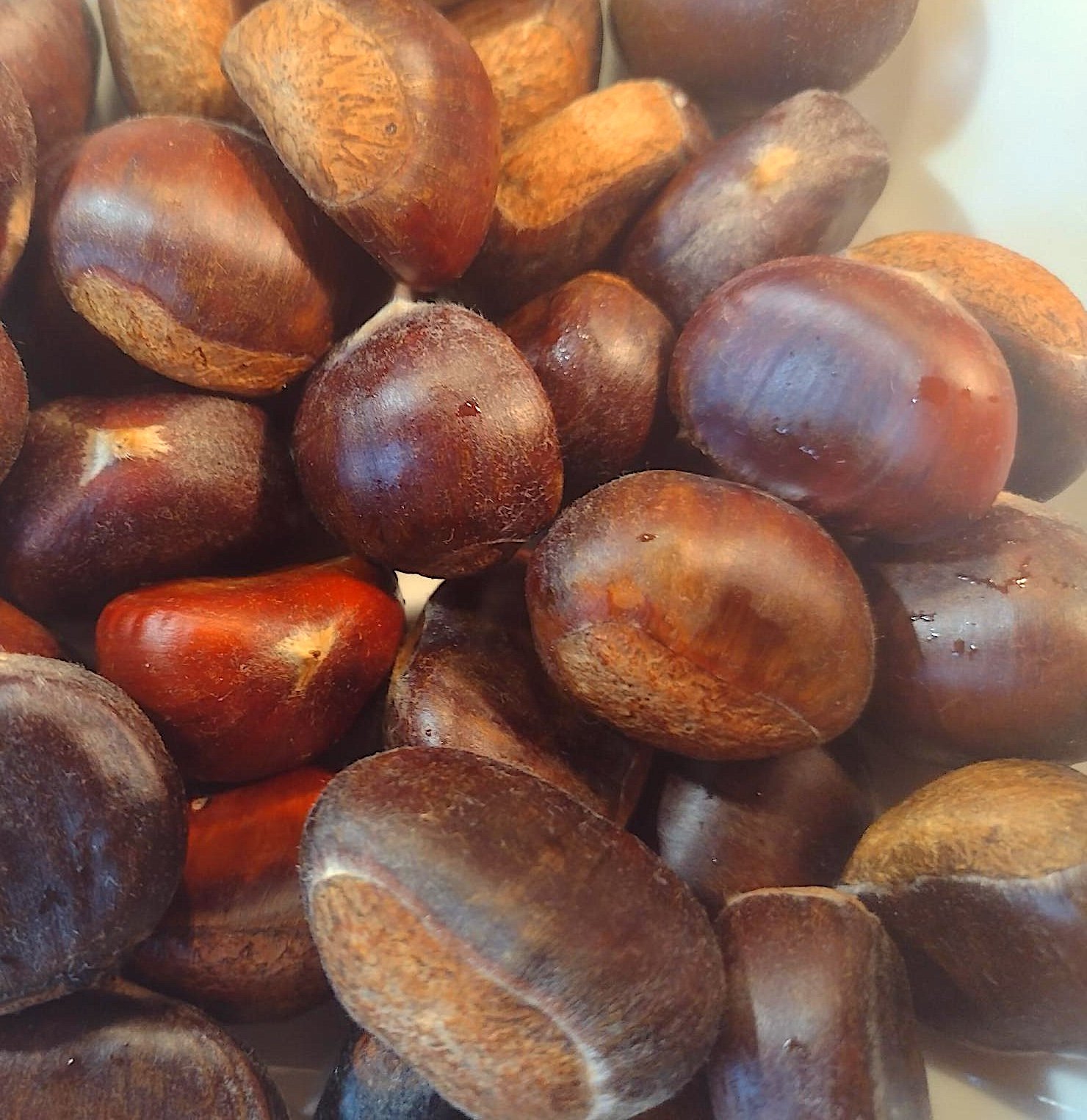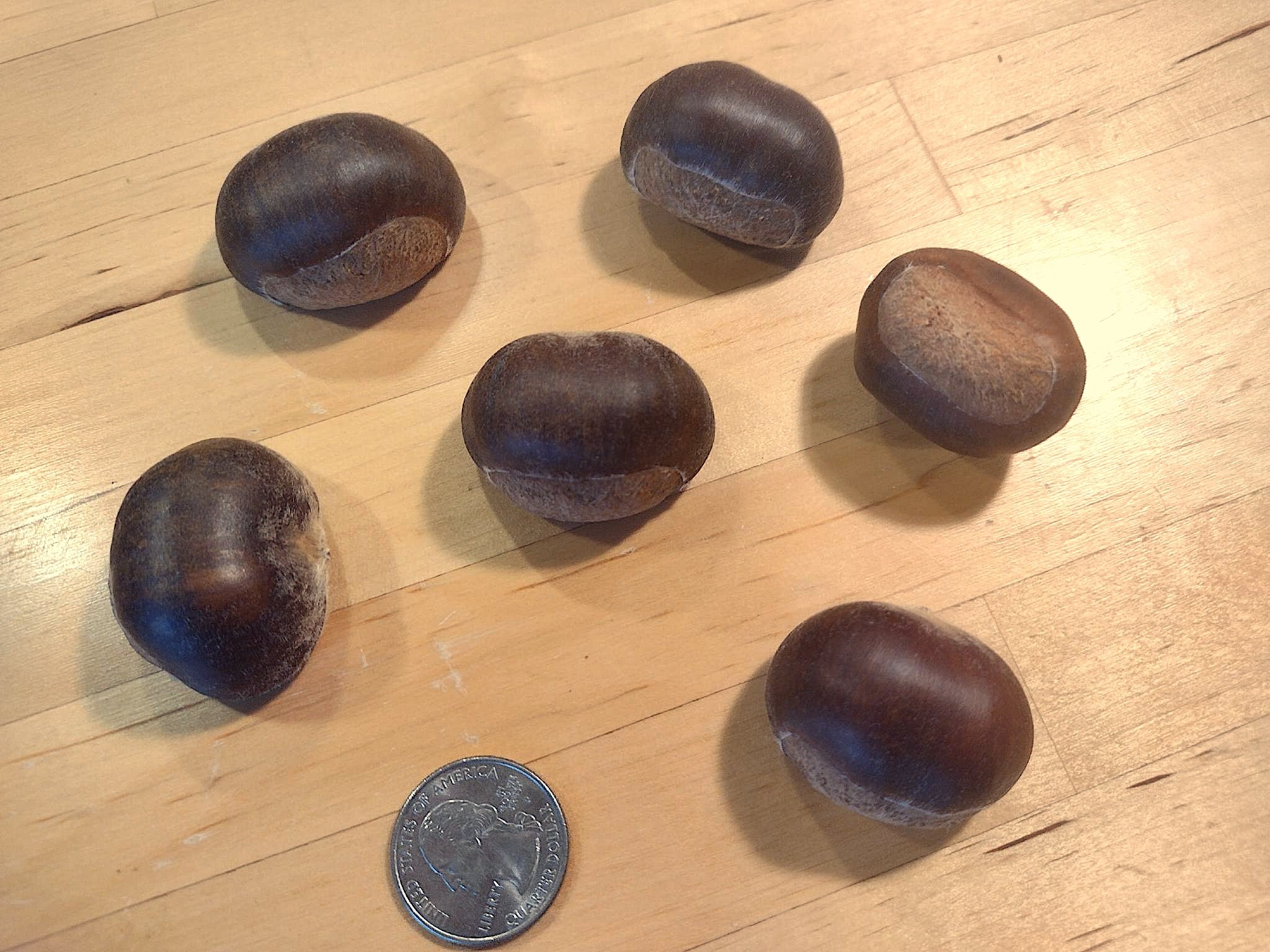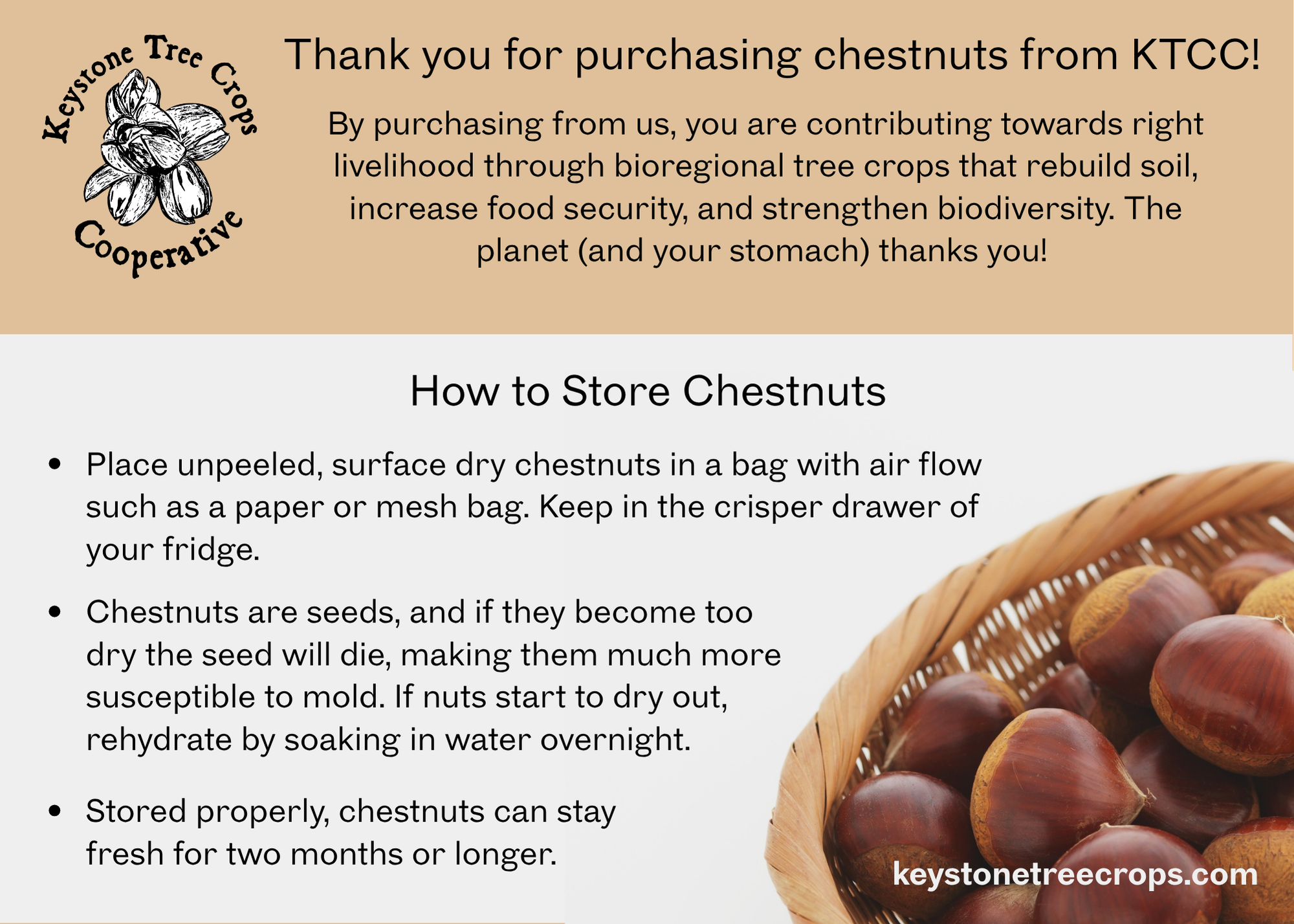How to Store Chestnuts
Place unpeeled, surface dry chestnuts in a bag with air flow such as a paper or mesh bag. Keep in the crisper drawer of your fridge.
Chestnuts are seeds, and if they become too dry the seed will die, making them much more susceptible to mold. If nuts start to dry out, rehydrate by soaking in water overnight.
Stored properly, chestnuts can stay fresh for two months or longer.
How to Roast Chestnuts
Step 1: Score If you don’t score your chestnuts, they will explode in the oven. Make a cut into the shell (“X” shape is classic) with a pairing knife or chestnut scoring knife.
Step 2: Soak (if needed) If there’s air space in the nut, the nut may be dry and would benefit from soaking. Soak for 1-2 hours. Soak in salt water for added flavor.
Step 3: Roast 320 degrees F in the oven on a baking sheet. This may take 20-40 minutes depending on the size of the nut.
Step 4: Peel and enjoy! Peel the shell while the nuts are still warm. The peelicle (papery layer) will come off easier. We carefully inspect each nut at our facility. However, some defects are not visible from the surface. Inspect while peeling.



